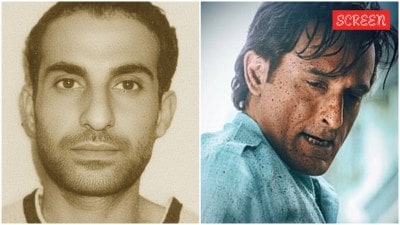As counting day nears, in UP and Bihar, which together send 120 members to Lok Sabha, opposition leaders Akhilesh Yadav and Tejashwi Yadav will be hoping that the social alliances they tried to build during the election campaign — PDA and BAAP respectively — turn out to be more than just catchy acronyms.
In a large and diverse country, politics has long been the art of bringing together various groups of people in a social coalition that can take a party first past the post. This has been true of this election and earlier ones; in the Hindi heartland and elsewhere in North India.

AKHILESH’s PDA: The challenge before Akhilesh Yadav for the Lok Sabha election was to take the Samajwadi Party (SP) base beyond just the Muslim-Yadav (MY) combination that Mulayam Singh built. He attempted therefore, to build a coalition of Pichhda (backwards), Dalit, and Alpsankhyak (Muslims), or PDA.
The SP, which is contesting on 62 seats across the state, has given tickets to only five Yadavs, all of whom belong to Mulayam’s Saifai clan. It has fielded 10 Kurmis (Patels), six Kushwaha-Maurya-Shakya-Saini candidates, three Nishads (boatmen), four Brahmins, and one Pal.
In the middle of the campaign, Akhilesh appointed Shyamlal Pal, an OBC shepherd leader, as the SP’s UP president.
This social engineering was intended to blunt the BJP’s criticism of the SP as a Yadav-Muslim party, and one that is controlled only by the family of Mulayam Singh. The BJP has gained in UP in recent years from the support of the smaller non-Yadav OBC castes, and the SP’s ticket distribution is aimed at denting the party’s base among the Kurmis, Kushwahas-Mauryas-Shakyas-Sainis, Pals, and a section of SCs.
With the BSP weakening, both the BJP and SP are also eyeing the Dalit vote. The BJP has been trying to make inroads into the BSP’s Jatav constituency, in addition to its earlier focus on Pasis, the other large block among the Scheduled Castes.
Story continues below this ad
The SP on its part has fielded SC candidates even on some general seats such as Ayodhya and Meerut. Its candidate in Ayodhya, Awadhesh Prasad, is a popular multiple-term MLA from the Pasi community, and its Meerut nominee, Sunita Verma, is a Jatav.
TEJASHWI’S BAAP: Like Mayawati’s base in UP, Nitish Kumar’s support among certain OBCs in Bihar is up for grabs. Like Mulayam in UP, Lalu Prasad’s core support in Bihar was MY, which the RJD founder’s young son has sought to expand to an umbrella MY-BAAP, which includes Bahujan (Dalits), Agda (forward castes), Aadhi Aabaadi (women), and Pichhda (backwards) or Poor.
The attempts to consolidate backward-caste votes in UP and Bihar go back further than Mandal and leaders like Mulayam and Lalu. In the 1960s, as parties like the Samyukt Socialist Party (SSP) sought reservation for the backward farming and artisanal communities, Dr Ram Manohar Lohia gave the call of “Pichhde Paawein Sau Mein Saath” (OBCs must get 60%).
The slogan had an impact, and in 1967, the SSP won 44 of the 425 seats in the UP Assembly, while the Bharatiya Jana Sangh (BJS), the precursor of the BJP, got 99. In Bihar, the SSP got 68 of 271 seats, and the BJS won 26. Among the BJS winners in both states were a large number of OBCs.
Story continues below this ad
AJGAR: Lohia passed away months after the 1967 election, but his campaign produced a new set of non-Congress leaders. In UP, the Jat leader Chaudhary Charan Singh formed the government and later, his own party. Charan Singh built a social coalition that became famous as AJGAR, or Ahir-Jat-Gujjar-Rajput, the castes that constituted the support base of the farmer leader Sir Chhotu Ram in the years before Independence.
Charan Singh, who had focused on building a base among rural populations and farmers even when he was in the Congress before 1967, was popular among non-Jat castes as well. The rebellion of V P Singh against Rajiv Gandhi led to the horizontal expansion of the AJGAR block across North India. OBCs and Rajputs collaborated to weaken and unseat the Congress in North India.
In the years after 1989, Mulayam and Lalu built potent MY coalitions, emerging as leaders of Muslims in their respective states, and positioning themselves aggressively against the forward castes. In Lalu’s strongest period in Bihar, the RJD gave the provocative slogan “Bhura Baal Saaf Karo”, meaning remove Bhumihars, Rajputs, Brahmins, and Lalas (as Kayasthas are known in Bihar).
KANSHI RAM’S DS-4: In 1981, Kanshi Ram formed the Dalit Shoshit Samaj Sangharsh Samiti, or DS-4 to initially rally all deprived communities. His famous slogan was “Brahmin, Thakur, Bania chhor, baki sab hain DS-4 (barring Brahmins, Rajputs, and Vaishyas, all others are DS-4)”.
Story continues below this ad
Kanshi Ram later identified his social base as Bahujan, formed the Bahujan Samaj Party (BSP), and vehemently attacked the upper castes. For some time in 1993, Kanshi Ram formed an alliance with Mulayam Singh’s SP, which flagged to parties like the BJP the imperative to promote leaders of OBCs other than Yadavs, and SCs other than Mayawati’s Jatav community.
Mayawati subsequently inducted advocate Satish Mishra and gave him a prominent role in the party.
This was part of reaching out to Brahmins, the group that the BSP had long targeted. Mayawati started identifying with Sarv Samaj and Sarvjan (all peoples), and the BSP won a majority on its own in UP in 2007.








































